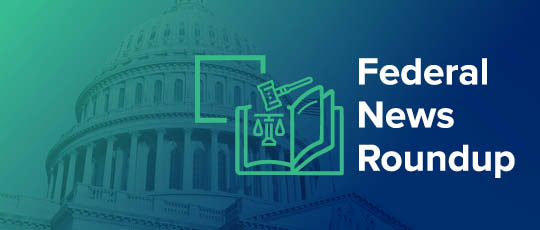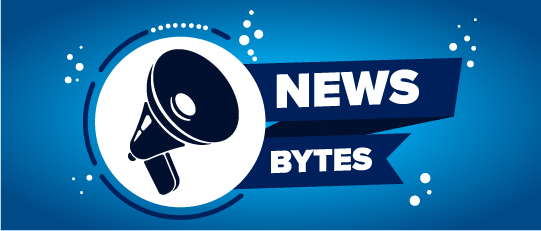For WorldatWork Members
- Employing Age-Friendly Work Practices for Multigenerational Workforces, Journal of Total Rewards article
- Strategic Benefits: How Employee Benefits Can Create a Sustainable Competitive Edge, Journal of Total Rewards article
- Revisiting Retirement Benefits, Workspan Magazine article
- Easy AI Tips to Improve Benefits Communications, Workspan Daily Plus+ article
For Everyone
- How Gen Z is Redefining Total Rewards, Workspan Daily article
- What Does the Near-Future U.S. Workforce Want in Benefits? Workspan Daily article
- Pay Isn’t Enough — Benefits Are Key to Engage, Retain Workers, Workspan Daily article
- With a Multigenerational Workforce, Personalized Rewards Are Key, Workspan Daily article
- Total Rewards ’25, conference
As the youngest members of today’s workforce, Gen Z workers (those born between 1997 and 2012) are the most likely to consider themselves holistically unhealthy — but they’re also under-utilizing their employer’s financial and health benefits more than any other generation.
According to Morgan Stanley research, Gen Z employees are three times less likely than other employees to be enrolled in their company’s 401(k) and saving for retirement, and twice as likely to not be participating in any workplace benefits at all.
Access bonus Workspan Daily Plus+ articles on this subject:
- Address Gen Z Struggles with Targeted Mental Health Benefits
- What Makes Gen Z Valuable to Employers?
“As the youngest set of employees, Gen Z workers have the least experience navigating their benefits,” said Missy Plohr-Memming, the head of group benefits national accounts at insurance and benefits provider MetLife. “Our data finds when Gen Z employees completely understand their benefits, they are more than twice as likely to feel holistically healthy.”
Additional research from benefit services provider Alight found the majority of Gen Zers find value in virtual mental health appointments (70%) and mental and emotional health apps (72%), and 69% said they would find personalized financial management valuable.
But Gen Z workers were more likely than those of any other age group to say they don’t participate in well-being benefits because they don’t understand how the programs work, said Laine Thomas Conway, the vice president of engagement services strategy and enablement leader at Alight.
With targeted and personalized solutions, total rewards (TR) professionals have an opportunity to better communicate and educate this workforce demographic about using their benefits.
Address Financial Concerns to Help Gen Z Save More
When it comes to financial benefits such as 401(k) plan participation, both a lack of understanding and day-to-day financial struggles are barriers for the workforce’s newest entrants.
Having come of age during the pandemic, many Gen Z employees have only ever experienced remote work, said John Bremen, the managing director and chief innovation and acceleration officer at WTW, meaning they’re excluded from traditional watercooler conversations where, for instance, employees remind each other about getting the corporate 401(k) match.
When surveyed about the function of target-date funds — which Thomas Conway described as one of the simplest ways to save for retirement — fewer than one-fourth of Gen Z workers understood the funds’ investment options and automatic rebalancing. But, they’re open to learning more.
“Gen Z [employees] are often really interested in getting help with finances,” Thomas Conway said. “How do we help bridge that gap for them and help them understand how they can use the money they do have wisely for both the short and long term?”
Rudimentary understanding of investments or not, your Gen Z employees know that saving for retirement is important, Bremen said — but another major obstacle keeping them from doing so is their current financial struggles. Many young workers say basic necessities such as food and rent— as well as increased work-related costs from commuting, new wardrobes and in-office meals — are eating up most every penny.
TR offerings that can help fill the gap of day-to-day money struggles include:
- Financial education
- Access to financial planners
- Subsidized transportation allowances
- Assistance with emergency savings
- Tuition reimbursement
- Matching employer contributions to a retirement plan when an employee makes student loan payments
- Employer health savings account contributions
- Sustainable investment options
“It’s incumbent upon employers, when talking about financial well-being, to not just talk about retirement,” Thomas Conway said. “For Gen Z, you have to show up in a holistic way. Short-term financial elements are so critical to their daily living, as well as how they view finances as a whole. They need help in both areas.”
Close Gaps with Targeted Communication
A major piece of the puzzle is effectively communicating benefits to Gen Z employees. Consider these tips from the experts interviewed for this article:
- Make the information relevant. If Gen Z employees think financial management services are only for people their parents’ age with seven-figure portfolios, they won’t seek help to get started with retirement savings.
- Utilize communication modes popular with younger workers. Social media, apps, videos, podcasts — find out if your Gen Z employees are processing information through these modes, and if they are, start using them.
- Embrace technology. “Many Baby Boomers and Gen X [workers] consider good service to be being able to talk to a live human being,” Bremen said. “Many millennials and Gen Z [workers] consider good service to be never having to talk to a live human being.” Don’t remove human-operated call centers, but dig into how artificial intelligence (AI) and other technology can help employees get questions answered. Also, consider how gamification can get young workers more excited about their benefits.
- Educate employees about AI tools. Gen Z employees, in particular, are more willing to follow AI-generated retirement advice, even knowing AI information is sometimes incorrect. Educate them on available tools, but also include a caveat that AI recommendations may be imperfect — and distribute your own information so workers using those tools can check their results.
- Train managers. First-line supervisors often are a worker’s main contact about their benefits, and a remote employee’s sole connection to the organization. When managers communicate with their employees about benefits, understanding of and engagement with benefits increases.
What Do Gen Z Workers Really Want?
MetLife’s Plohr-Memming said financial wellness programs and mental health services are top benefits for Gen Z. She also noted that these workers also prioritize having more options, with younger employees surveyed by MetLife listing higher quantities of must-have benefits.
Certain TR components such as pay, job security, flexible work arrangements, work environment and relationships all carry more weight for Gen Z, said Karen Gordyan, the senior director and total rewards solution advisor at WTW — but other factors such as being salaried vs. hourly, gender, and marital, partnered or parental status all affect benefit preference as well.
Gordyan added more choice in benefits leads to greater appreciation, and in turn, improved engagement and retention.
“This is why personalization of benefits is key, either in program design, communications or both,” she explained. “Employees have diverse needs, and employers need to understand and reflect high awareness of these needs in their total rewards.”
Editor’s Note: Additional Content
For more information and resources related to this article, see the pages below, which offer quick access to all WorldatWork content on these topics:







